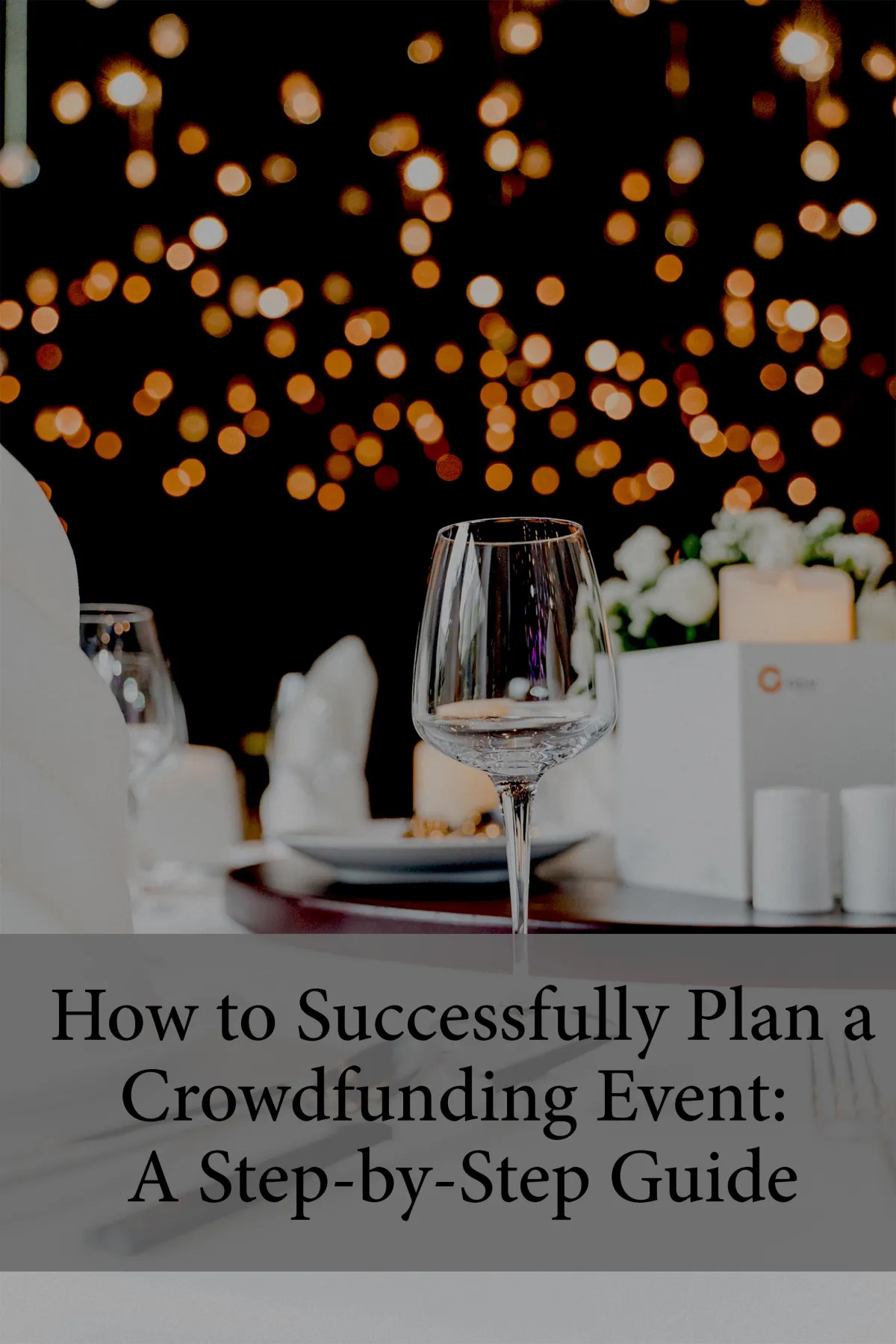EVENT PLANNING TIPS

How to Successfully Plan a Crowdfunding Event: A Step-by-Step Guide
Crowdfunding events are an excellent way to raise funds for a cause, project, or startup while building community support and engagement. Planning a successful crowdfunding event takes strategic thinking, organization, and a lot of creativity. Here’s a step-by-step guide to help you create a memorable event that reaches your funding goals.
1. Define Your Goals
Start by clearly defining the purpose of your crowdfunding event. Ask yourself:
What are you raising funds for?
How much money do you need to raise?
What are the key outcomes you want from this event (e.g., community awareness, new supporters, partnerships)?
Having specific goals will guide every decision you make during the planning process.
2. Identify Your Target Audience
Understand who you are trying to attract to the event. Your target audience might include potential donors, influencers, industry professionals, or members of your community. Tailor your event theme, marketing, and perks to appeal to their interests and values.
3. Choose the Right Type of Event
Select an event format that aligns with your goals and audience. Here are some popular crowdfunding event ideas:
Live Performances: Music concerts, comedy shows, or theater performances.
Workshops or Classes: Offer educational sessions or DIY activities.
Auctions or Raffles: Encourage bidding on donated items or exclusive experiences.
Networking Events: Host a mixer or panel discussion to connect like-minded people.
Virtual Events: Include live streaming or online donation platforms for a broader reach.
4. Set a Budget
Determine how much money you can allocate to the event. Include costs for:
Venue rental
Marketing and promotional materials
Catering or refreshments
Entertainment
Event staff or volunteers
Technology needs (e.g., audio/visual equipment, live streaming services)
Ensure your expenses are realistic and won’t eat too much into the funds raised.
5. Choose the Perfect Venue
The venue can make or break your event. Choose a location that:
Fits your audience size comfortably.
Matches the theme of your event.
Has necessary amenities like parking, accessibility, and technical equipment.
For virtual events, select a reliable platform with interactive features to engage your audience.
6. Develop a Marketing Strategy
A successful crowdfunding event relies heavily on strong marketing. Use a mix of online and offline strategies to create buzz:
Social Media Campaigns: Share teasers, countdowns, and behind-the-scenes content.
Email Marketing: Send personalized invitations and reminders to your mailing list.
Press Coverage: Reach out to local media or bloggers to promote your event.
Partnerships: Collaborate with influencers, businesses, or community leaders to expand your reach.
7. Leverage a Crowdfunding Platform
Choose a user-friendly crowdfunding platform where attendees can donate before, during, and after the event. Popular platforms include Kickstarter, GoFundMe, and Indiegogo. Customize your campaign page with compelling visuals, a clear description of your cause, and enticing rewards for donors.
8. Create Engaging Content
Your event should tell a story that resonates with attendees. Use photos, videos, and personal testimonials to showcase the impact of your cause. During the event, share live updates on social media, including donation milestones and heartfelt thank-yous to donors.
9. Offer Incentives
Encourage donations by offering rewards or perks. These could include:
Exclusive merchandise
Shout-outs on social media or during the event
VIP access or experiences
Thank-you notes or certificates of appreciation
Make sure the rewards are meaningful to your audience and proportional to their contributions.
10. Recruit Volunteers or Staff
Having a reliable team is essential for smooth execution. Assign clear roles and responsibilities, such as:
Greeting and registering attendees
Managing technical aspects (e.g., sound, lighting, livestream)
Facilitating activities or entertainment
Monitoring donation platforms
11. Monitor Progress
Track your fundraising progress throughout the event. Share real-time updates on screens, through announcements, or online to keep the energy and excitement high.
12. Show Gratitude
After the event, thank everyone who contributed—attendees, donors, volunteers, and sponsors. Send personalized emails, post thank-you messages on social media, and showcase the results of their support. Highlight how the funds raised will make a difference.
13. Evaluate and Reflect
Analyze the success of your event by comparing your goals to the actual outcomes. Gather feedback from attendees, donors, and team members to identify areas for improvement. Use these insights to plan even better events in the future.
Conclusion
Planning a crowdfunding event may seem daunting, but with the right preparation, it can be a powerful tool to achieve your fundraising goals and rally support for your cause. By following these steps, you’ll create an engaging, impactful, and successful event that leaves a lasting impression on your community.
What’s your favorite crowdfunding event idea? Share your thoughts in the comments below!


